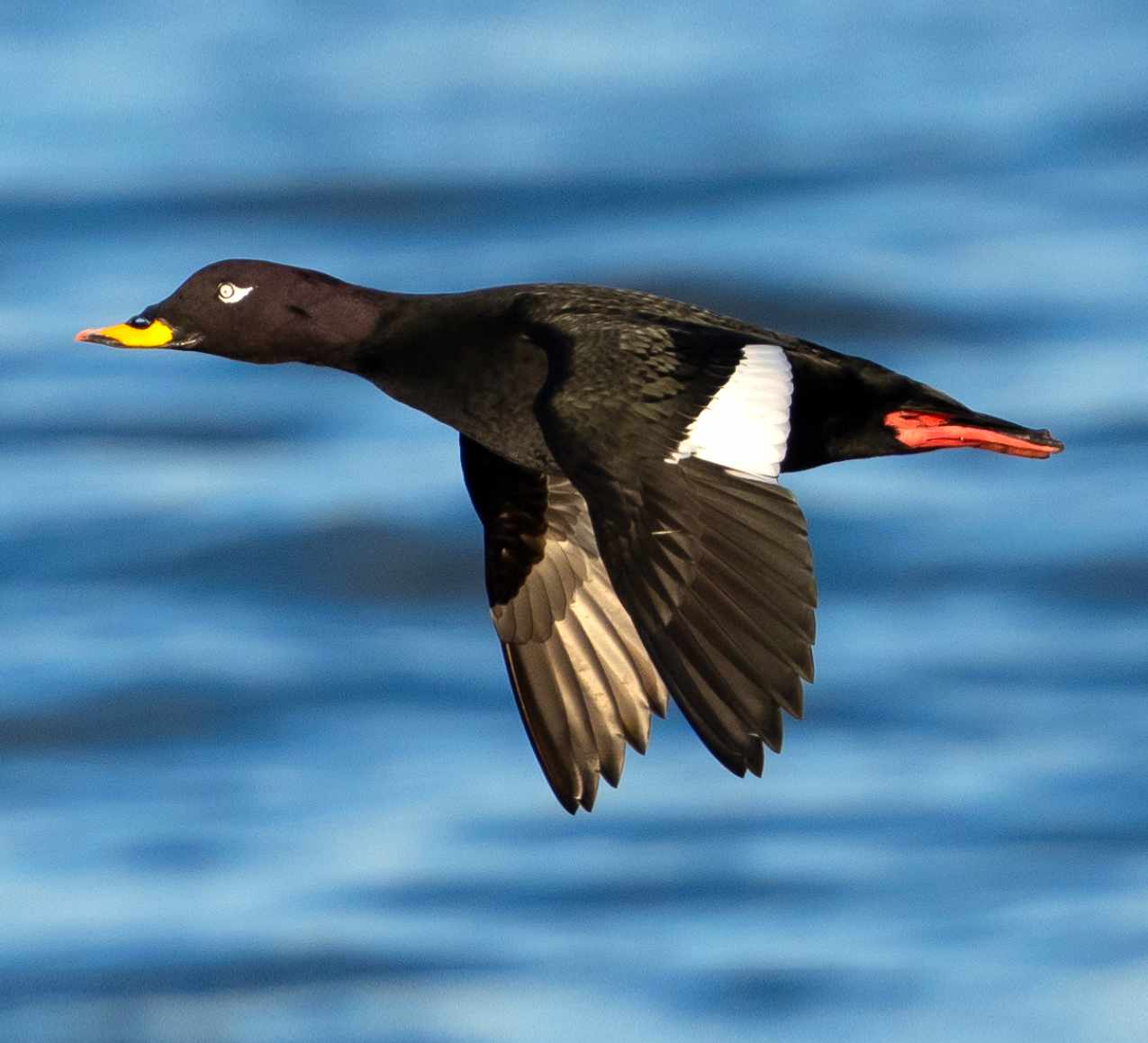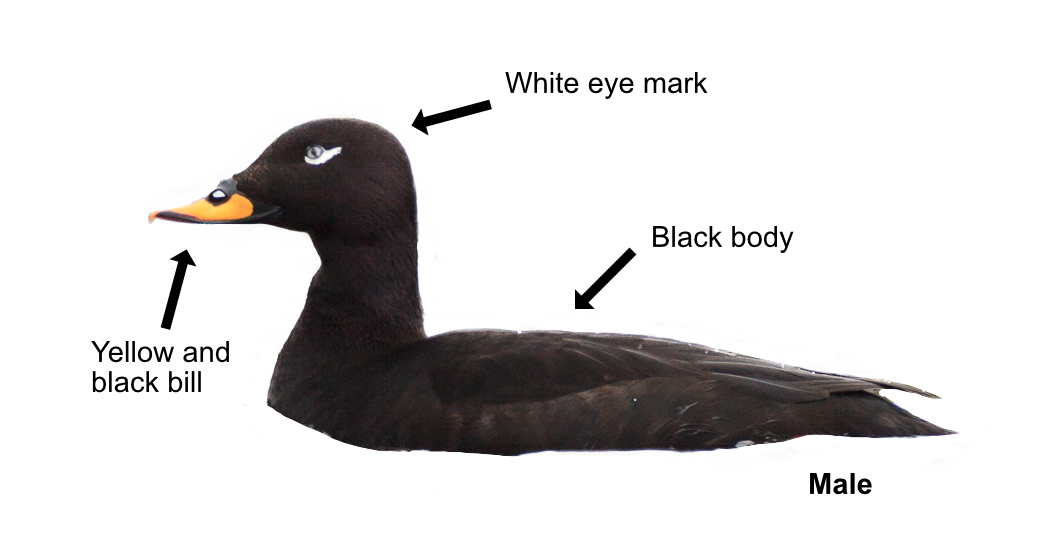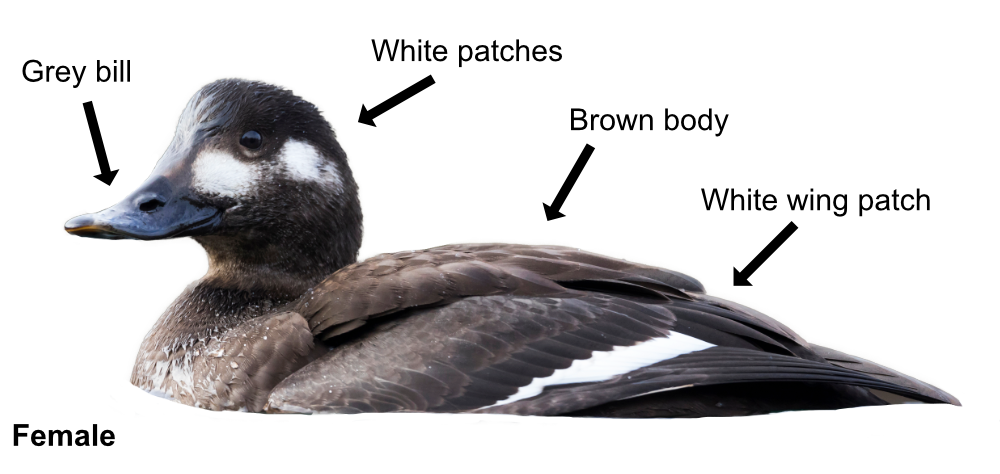
The Velvet Scoter is the largest of the Scoters. It is a sea duck that nests in trees! A winter visitor that is mainly seen from January to March on the coasts of Scotland, Norfolk and northeast England in small numbers or mixed in with larger flocks of Common Scoters. The Velvet Scoter can visit large inland lakes and is usually found where there is a good supply of shellfish.
The Velvet Scoter looks Eider-like in shape and is about the size of a Mallard. The male is black with a white wing patch, a white mark under his eye, a black pointed tail, and a long yellow and red bill with a knob at the base. The female is more brown with a white wing patch, pale patches on her head, and a grey bill. In flight, the white patch can easily be seen at the back of their dark wings. They fly with their neck held rigidly outstretched, not drooped like the Common Scoter. Velvet Scoters are generally silent, only making occasional low growling calls in their winter flocks.

Like the Common Scoter, they dive to feed on molluscs, cockles, mussels, whelks, crabs and small fish. The Velvet Scoter uses both its wings and webbed feet to propel itself underwater and dives with partially open wings but with no jump.

They breed in Scandinavia and Russia. Courtship takes place in the winter flocks and nesting starts in May. They nest in single pairs or loose groups. The lined nest is built on the ground or in a tree close to the sea or lake. Dad deserts the nest site as soon as the 7-9 creamy-buff eggs are laid, leaving mum to do all the hard work. The eggs hatch after 27 days and the young can soon feed themselves. One mum may look after youngsters from several broods. They become fully independent and can fly 50 days later. The youngsters won't breed themselves until they are 2 or 3 years old. After breeding, Velvet Scoters gather in large numbers off the coast of Denmark to do their moult.
About 3,000 Velvet Scoters overwinter here. They are specially protected as, like the Common Scoter, they are very vulnerable to oil spills, especially when in their large moult gatherings. The oldest known Velvet Scoter lived for 12 years though their average life span is 7 years.
Their Latin name is 'melanitta fusca' where the 'melanitta' is derived from the Ancient Greek 'melas' for 'black' and 'netta' for 'duck'. The 'fusca' comes from the Latin 'fuscus' for 'dusky brown'. Another common name for the Velvet Scoter is the 'velvet duck' from the velvety looking plumage of the male.